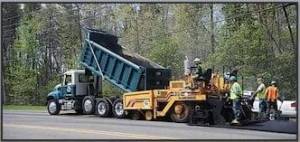GREAT MILLS TRADING POST
COMMERCIAL BUILDING SUCCESS, built on SOLID service & results!
Safety Tips For Operating or Using Construction Equipment
Construction equipment can be very dangerous to work around, however with the proper safety precautions, laborers can prevent fatal accidents. Some of the precautions that laborers can take are wearing safety glasses, earplugs, and work gloves around dangerous construction equipment.
Safety glasses are not just regular seeing glasses or sunglasses. Instead, safety glasses are for use around construction equipment and they protect the eyes with plates of plastic or resin between two sheets of glass. These three layers of protection reduce the chance for flying debris to enter the eye. Found in environments and around construction equipment that produce a lot of small particles (such as wood, dust, paint, and rocks) safety glasses are used by laborers who must protect their eyes - perhaps even by OSHA standards. They are appropriate for laborers who use construction equipment to cut wood, spray paint, and pour cement. If you are required to wear safety glasses, you should wear a pair that fits snuggly around the head, and when not in use, you should keep them in a place that wont scratch them. Scratched lenses decrease visibility.
Appropriate for labors that use noisy construction equipment, such as saws, chain saws, jackhammers, bulldozers, machine lifts, and more, earplugs are placed in the ear to protect against noise, water, dust and more. They are of particular use when the noise level of a job is too loud to bear. Found on a work site filled with noisy construction equipment, earplugs are used to protect the ears just like any other part of the body. If you are required to wear earplugs, you should select a pair that fits snuggly into each ear. They shouldn't be too big or small as they may fall out. You should also make sure they are easily visible in case they're misplaced. They're such tiny things and if they are lost, being a bright color will enable easy location. Earplugs may be carried in a separate case that will protect them from construction equipment dirt and dust.
Found on construction sites that use dangerous chemicals (like roofing tar for example), greasy materials, and materials that may produce splinters (like wood), work gloves are appropriate for those who clean, carry lumber, carry siding and pipes, for example. As protection for the hands, work gloves are used when hands may be exposed to material that could easily tear the skin, or to chemicals that could damage the skin. Gloves protect the hands from unnecessary wear and tear resulting from repetitive use of construction equipment. If you are required to wear work gloves, you can select a pair that fits snuggly onto each hand. They shouldn't be too big or small as they may fall off or allow dirt, dust, and chemicals to reach the skin of the hands.
For construction labor that's in a muddy or rocky area, steel-toed boots protect feet from heavy falling objects, nails on the ground, and splinters in wood. Construction equipment, such as those that produce dangerous chemicals, cements, or paint requires workers to wear these boots as well. Their grated bottoms prevent falls from slippery surfaces as well, but because these boots have a metal plate inserted under the tips of the front, their main function is to protect toes. These boots should fit the feet snuggly. Boots that are too small will cramp the feet and disable a worker from fully performing a job. Boots that are too large will rub the feet and cause uncomfortable abrasions. In addition, loose fitting boots run the risk of catching falling debris from construction equipment and will further irritate the feet. Most workers like to wear a couple pairs of socks with these boots to create a comfortable and snug atmosphere inside each one.
Other types of protection from the debris of construction equipment include hard hats and back braces.

 Construction equipment can be very dangerous to work around, however with the proper safety precautions, laborers can prevent fatal accidents. Some of the precautions that laborers can take are wearing safety glasses, earplugs, and work gloves around dangerous construction equipment.
Construction equipment can be very dangerous to work around, however with the proper safety precautions, laborers can prevent fatal accidents. Some of the precautions that laborers can take are wearing safety glasses, earplugs, and work gloves around dangerous construction equipment.